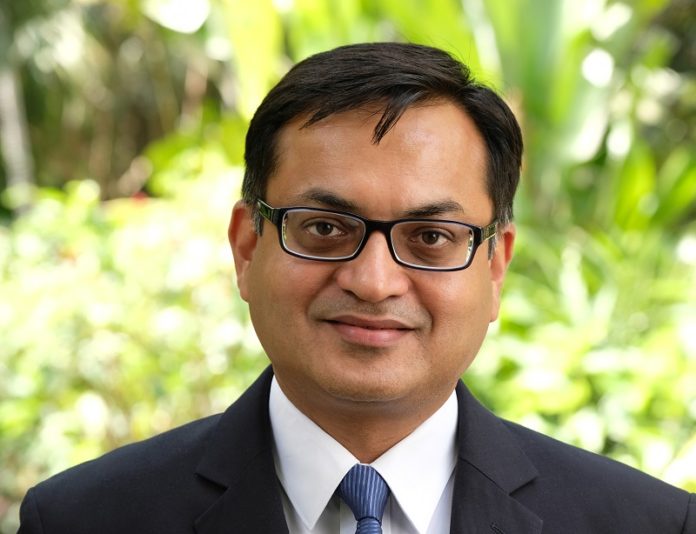We live in an era where the pace of technology change is faster than any of us can keep up with.
In fact, the phenomenal amount of data in our world is almost as baffling as some of the analogies used to describe it. IDC’s “Data Age 2025” whitepaper predicts there will be 175 zettabytes of data in the world within the next five years. How much data is that? According to an IDC executive, if you were to store all of that data onto BluRay discs, you’d have enough discs to get you from Earth to the moon 23 times.
Putting curious observations about the size of ‘big data’ to one side, it’s clear that not all technologies were built to survive today’s rapidly growing digital world. From floppy discs to the fax machine, the landscape is littered with obsolete technologies. The rise and fall of different technologies reflects Moore’s Law, a prediction made 55 years ago that as microchips become more condensed with computing power, the capabilities of computers would grow exponentially.
One technology that has existed for many years and is still experiencing ongoing innovation is the two-way radio.
The first commercially successful car radio developed for public safety use was invented in 1930. Today, emergency services and commercial organisations continue to rely on two-way radio as the most reliable and secure way to communicate – both for everyday work and in times of emergency.
Made for mission critical moments
A key difference between the two way radio and other communication technologies such as smartphones, is that radios are used for instant, team-based collaboration.
For emergency service agencies, transportation networks and other critical services, the ability to communicate with a group of people enables tasks to be managed more efficiently and safely. For example, with an instant voice call a bus operator could call for the nearest available bus driver to come to pick up passengers from a congested part of the network.
Then there is the use of radio in times of crisis.
The work of a first responders is sometimes described as being “hours of boredom, punctuated by moments of terror”. It’s a description that conveys the fact that police officers, firefighters and other responders never know when they will be facing their next high-stress situation.
In these moments, public safety professionals describe their radio as being a lifeline. It’s a piece of technology they know how to use instinctively, a reliable communication tool for reaching other officers and their colleagues in the Control Centre whenever needed.
The way two-way radios work in emergency situations also helps to explain why the technology has experienced such longevity.
When natural disasters and other catastrophes occur, the radio networks used by public safety agencies have also proven to be more robust and resilient than cellular networks. That’s especially important during the “golden hour” of emergency response, where fast and decisive action can save lives.
Radio devices are also known for being able to withstand heavy punishment and are designed for ease of use in high stress situations.
The evolution continues
Through incremental innovation, the design elements that have long defined radio are improving too. Although it’s fundamental for radios to provide excellent audio quality, new refinements are delivering louder and clearer voice performance with noise cancelling features to eliminate background noise.
Ensuring that radios can withstand the rigours of daily use by emergency services is also essential, yet some of the latest radio design innovations are smaller, lighter and provide longer battery life. The art to improving the design of contemporary radios must balance style with substance – in other words, ensuring any design enhancements do not come at the cost of performance or safety for radio users.
With new generations entering the workforce, radio networks have also evolved to enable workers to use the device they are most familiar with. Secure and reliable connectivity to radio networks is available today for people using smartphones, tablets and other devices.
Today, around 60 percent of law enforcement officials are carrying a smartphone provided by their agency, highlighting the opportunity to provide greater integration between the radio and other technologies.
In technologically advanced radios, a police officer could simply press the radio’s emergency call button to activate his or her body worn video camera and immediately send vision from the scene to their colleagues in the control room. A covert officer tracing a suspect could also discreetly use a smartphone to operate key functions of the radio.
It’s also possible to integrate advanced radio technologies with video management software powered by advanced AI and video analytics. This enables dispatch alarms to be automatically sent to two-way radios via text message when video analytics systems detect unusual events – for example, when the license plate number of a suspect’s vehicle is detected or when an unauthorised person attempts to enter a facility.
Radio technology has not only withstood the test of time, but through focused improvement, it continues to evolve to deliver better overall performance with stronger integration to other technologies.
Radio continues to provide the most trusted communications technology for mission critical industries. That’s why we can expect to see its rich story of innovation to continue.
















